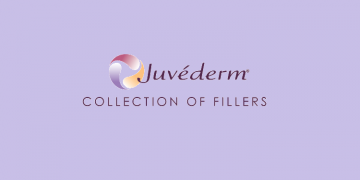Dye-VL Treatment for Pigmented & Vascular Lesions

Dye-VL is becoming the technology of choice for treating pigmented and vascular lesions. It’s a non-invasive treatment that not only deals with skin issues, but also serves to rejuvenate the skin. Dye-VL treatments produce remarkable results by treating the problems below the skin, without affecting or damaging the skin’s outer layer.
Before we take a closer look at Dye VL treatments, it’s important to understand what pigmented and vascular lesions are — and what causes them.
Pigmented lesions are dark spots that are often the result of sun exposure, and may be either flat or raised. The spots are the result of an overproduction of melanocyte cells, which produce the skin-darkening pigment known as melanin. Common types of pigmented lesions include freckles, moles, and age spots.
Vascular lesions are abnormal veins or blood vessels. They can be caused by a variety of factors. Some are thought be hereditary, while others are the result of skin injury or irritation and UV damage. Spider veins, hemangioma, and rosacea are common types of vascular lesions.
Related Post: What’s the Best Way to Reduce Skin Pigmentation?
Dye-VL Treatment
Dye VL is an advanced system that uses next-generation fluorescence technology (AFT), to treat pigments lesions. AFT uses a special filtering system to convert short wavelengths that were previously unusable, into a part of the usable spectrum.
The Dye VL was developed by Alma Lasers, and the module is a part of its Harmony XL PRO. A typical treatment with the device takes about 30 minutes to complete, but this may be longer, as it depends on the type of lesion being treated, as well as the size of it.
How Dye-VL Can Help Pigmented & Vascular Lesions
Dye VL technology works by specifically targeting the chromospheres in the lesion using a system of selective photothermolysis. This process ensures that the laser only treats the specific pigment. Dye VL targets the melanin in pigmented lesions, and the hemoglobin in vascular lesions.
When used to treat pigmented lesions, the laser emits short bursts of light and as the temperature rises the cells with the pigment are broken down. After treatment the skin make flake off for the first few days, and there may also be some discoloration. However, the treated cells will eventually be replaced with normal cells as the skin regenerates.
In the case of vascular lesions, the laser energy is absorbed by the hemoglobin and this results in the abnormal vessels being closed off. This significantly reduces the appearance of the veins or blood vessels.
Related Post: Guide to Thermage® Wrinkle Treatments for Anti-Aging
Other treatment uses include:

Source: Alma Lasers
- Vascular lesions
- Port wine stains
- Hemangioma
- Rosacea
- Venous malformation
- Acne & acne scarring
- Skin rejuvenation
- Hypopigmentation
- Tattoo removal
- Fraction alablative skin resurfacing
- Hair removal
- Skin tightening
- Laser peeling
- Fine lines & wrinkles
Common Questions
Dye VL technology is safe and very effective. The device uses a narrow band of light within the 500-600nm wavelength. This has the advantage of ensuring that only the specific tissue is targeted, which is the melanin in the pigmented lesions or the blood vessels for vascular lesions.
In addition, the light produced by the Dye VL is only absorbed by the pigment in the lesion; therefore the surrounding skin is not damaged.
Dye VL is safe as long as the device is used as intended, and the provider adheres to the safety guidelines. In particular, the device should be used on skin types in the ranges I-IV based on the Fitzpatrick skin phototype. Also, the treatment should not be done on tanned skin, and exposure to UV rays should be avoided for at least 6 weeks after treatment.
Dye VL is a fast and effective treatment for some very common skin concerns!
Related Post: How to Reduce Your Risk of Skin Cancer
Video: Harmony XL Pro – Dye VL
Published on Apr 19, 2015 – Alma Harmony’s Dye-VL module offers the first real alternative to the Dye Laser offering treatment that is just as effective as the Dye laser, with the safety, versatility and affordability of pulsed light.
Technical Specifications
Light Source: Light Pulsed I
Cooling: Contact Thermo-electrical cooling (TEC)
Wavelength: 500-600 nm
Fluence: Up to 15 J/cm2
Pulse Width: 10, 12, 15 msec
PRR: 1 Hz
Spot Size: 3cm2
Source (PDF)
Dye VL Treatment near Milwaukee
Clients in the Milwaukee metro area can contact Wisconsin Vein Center & MediSpa, Pewaukee, WI, to learn more about Dye VL treatment. Click here to set up a consultation with Dr. Deborah Manjoney.



